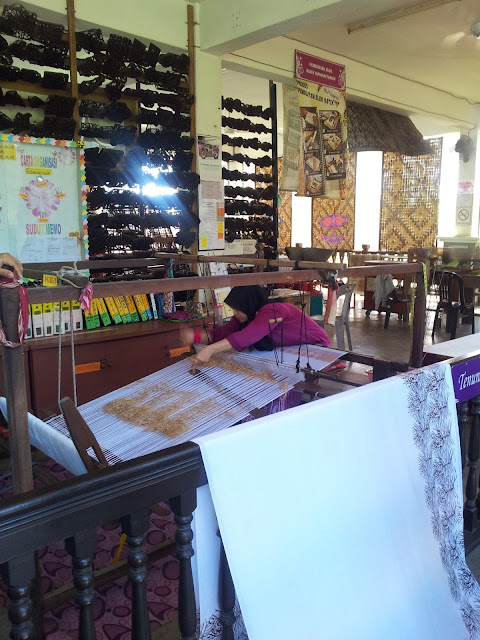Fashioning People and Place
[Experimental & Personal] Research dedicated to exploring sustainability and transdisciplinary discussion.... ART///DESIGN///TEXTILES///ENVIRONMENT///SCIENCE///TECH///ETHICS
Pages
Saturday, 10 October 2015
Thursday, 30 July 2015
--------------------------------------------------------------------------------------------------------------------------
Ceremonial Endeavour
This excerpt from a book that I adore speaks volumes about the ways that fashion and textiles were and can be (socially) sustainable.
There was a time when the making of cloth and clothing were personal endeavours, or regarded highly as cherished skills. This endeavour and understanding created a sense of spirit and status for the wearer [and the maker] while also acting as medicine for wellbeing; especially whilst engaging in the making process - this I believe, connects the fundamental purpose of clothing closer to the wearer.
The excerpt is taken from, Chapter 3 ~ Nosing out the Facts, Women who run with the Wolves, by Clarissa Pinkola Estes.
In archetypal symbolism, clothing represents persona, the first view the public gains of us. Persona is a kind of camouflage which let's others know only what we wish them to know about us, and nothing more. But there is an older meaning to persona, one found in all the MezoAmerican rites, one well known to cantadoras y cuentistas y curanderas, healers. The persona is not simply a mask to hide behind, but rather a presence which eclipses the mundane personality. In this sense, persona or mask is a signal of rank, virtue, character and authority. It is the outward significator, the outward display of mastery.
Notes on Chapter 3
Throughout Mezo-America, la máscara, the mask, connotes that a person has mastered union with spirit portrayed by both the mask and the spirit-clothing one wears. This identification with spirit through clothing and face adornment has almost faded away completely in Western culture. However, spinning of thread and weaving of cloth are ways to invite or be informed by spirit all in itself. There is evidence that the making of thread and cloth were once religious practices used to teach the cycles of life and death and beyond.
Friday, 10 July 2015
--------------------------------------------------------------------------------------------------------------------------
Shimacho Stripe Book
Shimacho 縞帖 literally translates to ‘stripe book’. These Japanese books are a great archive and resource of the fabric that was being woven and worn in the 19th Century, when most of these books were made.
The dark tones and subtle, small stripes, found throughout
most of these books is due to sumptuary laws made during the Edo period (1603 –
1867), when the government dictated what a person could wear, and also when
stripe patterns became increasingly popular as kimono patterns.
During this time, most common people had to dress in cotton
or bast fibre clothing with dark colours and small repeats. Bright colours and
expensive silks, and textiles that showed large repeats were worn by the upper
or ruling classes.
These books were created for numerous reasons – according to
some sources, some are sample and swatch books that were used for commercial
use by businesses, and some were created by weavers to keep a record; as a
scrapbook or a portfolio of sorts, of the different designs they’d created.
Some Shimacho were composed by families; by generations of weavers as a keepsake for their home and to inspire their work.
Legend has it that when a young girl left home upon
marriage she would take a shimacho to her fiancé’s family home, so they could recreate
or be inspired by her family’s woven cloth.
Although there is speculation that the albums don’t hold as
much sentimental value as some of the legends suggest.
“In a culture and time where weaving was done in
every home, my hunch is that there was a lot of swapping of fragments between
families and neighbors, as there must have been a lot of mutual admiration and
intrigue between household weavers, and these weavers wanted to compile as much
inspiration as possible.” ~ Sri Threads
Images and text below from Sri Threads
This shimacho is typical of most: slivers of cloth were pasted into an already-existing book, the leaves of which were filled as swatches were gathered.It measures 9″ x 6″ or 23 cm x 15.25 cm and contains 15 leaves–and many worm holes, a common feature of almost any shimacho.
This shimacho is typical of most: slivers of cloth were pasted into an already-existing book, the leaves of which were filled as swatches were gathered.It measures 9″ x 6″ or 23 cm x 15.25 cm and contains 15 leaves–and many worm holes, a common feature of almost any shimacho.
 |
| from Wafu Works Blogspot |
 |
| from Wafu Works Blogspot |
 |
| from Wafu Works Blogspot |
Thursday, 4 June 2015
Malaysian and Indonesian Textiles
Here are some images from my recent trip to Malaysia and Bali. I visited a Batik and Songket business called Noor Arfa in Kuala Terengganu, Malaysia.
And Sari Amerta Batik in Sukawati, Bali Indonesia.
And Sari Amerta Batik in Sukawati, Bali Indonesia.
 |
| We were greeted at the entrance for our tour |
 |
| DIY |
 |
| Batik making equiptment |
 |
| Iron batik stencils for 'block print' batik |
 |
| Weavers weaving with banana and pineapple fibres |
 |
| Wau Bulan (traditional Malaysian moon kite) |
Thursday, 30 April 2015
Subscribe to:
Comments (Atom)














